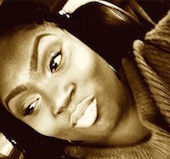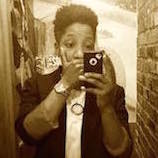Toni Tour Itinerary
We will read each of Toni Morrison's novels in chronological order.
-

January
The Bluest Eye (1970)
The story is about a year in the life of a young black girl named Pecola who develops an inferiority complex due to her eye color and skin appearance. It is set in Lorain, Ohio, against the backdrop of America's Midwest during the years following the Great Depression!
-

February
Sula (1973)
The Bottom is a mostly black community in Ohio, situated in the hills above the mostly white, wealthier community of Medallion. The Bottom first became a community when a master gave it to his former slave. This "gift" was in fact a trick: the master gave the former slave a poor stretch of hilly land, convincing the slave the land was worthwhile by claiming that because it was hilly, it was closer to heaven. The trick, though, led to the growth of a vibrant community. Now the community faces a new threat; wealthy whites have taken a liking to the land, and would like to destroy much of the town in order to build a golf course.
-

March
Song of Solomon (1977)
Song of Solomon explores the quest for cultural identity. Based on the African-American folktale about enslaved Africans who escape slavery by flying back to Africa, it tells the story of Macon "Milkman" Dead, a young man alienated from himself and estranged from his family, his community, and his historical and cultural roots. Milkman is mentally enslaved and spiritually dead, but with the help of his eccentric aunt, Pilate, and his best friend, Guitar Bains, he embarks on a physical and spiritual journey that enables him to reconnect with his past and realize his self-worth.
-

April
Tar Baby (1981)
Tar Baby is the story of the love affair between a beautiful black model, molded by white culture, and a black man who represents everything she both fears and desires. It sweeps from a white millionaire's luxurious Caribbean estate, to the shimmering sophistication of Manhattan, to the bedrock realities of the American South-land. This is not only a novel of hypnotic, lyrical beauty, it is a revelation of all the shades of feeling and the full spectrum of choices facing women and men in a black-and-white world.
-

May
Beloved (1987)
Staring unflinchingly into the abyss of slavery, this spellbinding novel transforms history into a story as powerful as Exodus and as intimate as a lullaby. Sethe, its protagonist, was born a slave and escaped to Ohio, but eighteen years later she is still not free. She has too many memories of Sweet Home, the beautiful farm where so many hideous things happened. And Sethe’s new home is haunted by the ghost of her baby, who died nameless and whose tombstone is engraved with a single word: Beloved. Filled with bitter poetry and suspense as taut as a rope, Beloved is a towering achievement.
-

June
Jazz (1992)
In the winter of 1926, when everybody everywhere sees nothing but good things ahead, Joe Trace, middle-aged door-to-door salesman of Cleopatra beauty products, shoots his teenage lover to death. At the funeral, Joe’s wife, Violet, attacks the girl’s corpse. This passionate, profound story of love and obsession brings us back and forth in time, as a narrative is assembled from the emotions, hopes, fears, and deep realities of black urban life.
-

July
Jazz Cont'd
In the winter of 1926, when everybody everywhere sees nothing but good things ahead, Joe Trace, middle-aged door-to-door salesman of Cleopatra beauty products, shoots his teenage lover to death. At the funeral, Joe’s wife, Violet, attacks the girl’s corpse. This passionate, profound story of love and obsession brings us back and forth in time, as a narrative is assembled from the emotions, hopes, fears, and deep realities of black urban life.
-

August
Paradise (1997)
Paradise, which focuses on the love of God, is Morrison’s third novel in a trilogy of books dealing with various kinds of love. As the book opens, a violent, bloody massacre takes place at the Convent, a run-down refuge for broken women located near the small town of Ruby, Oklahoma. The inhabitants of Ruby are descendants of a group of dark-skinned African Americans who migrated west in the 1870’s from Mississippi and Louisiana. Hoping to be accepted in Fairly, a town of lighter-skinned blacks, they were turned away. This event becomes memorialized in the town’s history as “The Disallowing.” The nomadic group finally established a town that they named Haven. During the World War II years, however, the morals of Haven declined so much that the town elders became convinced that they should establish a new town, Ruby, named after the deceased sister of the town’s two patriarchs, Deek and Steward Morgan.
-

September
Love (2003)
Love is a carefully structured novel with a prologue and nine chapters devoted to the characters’ stories and their different, often contradictory, perceptions of Bill Cosey. Together, these chapters span a sixty-year period and represent the way racial segregation and the process of desegregation shape the lives of the Cosey family. To the local African American community, Cosey’s Hotel and Resort, catering exclusively to African Americans with its procession of famous jazz musicians and wealthy guests, offered a fairytale image of success during the Jim Crow period. While Bill himself was a role model of African American achievement to his guests and the locals, the different chapters in the novel suggest the tensions, bitter resentments, and misunderstandings brewing in Bill’s immediate family, and they question Bill’s roles as a husband, father, grandfather, friend, and benefactor.
-

October
A Mercy (2008)
A Mercy, published in 2008, joins Toni Morrison’s celebrated body of work exploring the African American experiences of slavery and freedom. But in A Mercy, Morrison’s handling of those issues is more multifaceted than in her previous novels. Morrison goes back to the beginning of slavery in America, in the late seventeenth century, a period during which America was far more diverse and complex than is generally imagined today. The novel includes Portuguese, Dutch, English, Native American, African, and mixed-race characters, all vying for a place in this new world. Neither religious freedom nor religious tolerance is a given, and while the Southern colonies are clearly strongholds of slavery, the North is by no means an innocent bystander. Diseases such as measles and smallpox run rampant. Nevertheless, there is an Eden-like quality in the beauty and richness of this new world, along with many decencies that transcend the evil elements.
-

November
Home (2012)
The story follows Frank Money, a Korean veteran, in the aftermath of his life when he is discharged from the army. After watching his two best friends die in front of him, and being responsible for killing numerous people, including a young Korean girl, Frank is suffering from Post Traumatic Stress Disorder (PTSD). For the first year after getting out of the army, Frank drinks too much and lives on the streets. When he decides to sober up and clean himself up, he meets Lily, working at the drycleaner where he takes his army pants and jacket for cleaning. Frank's rages somehow land him in a psychiatric ward of a hospital. He escapes from the hospital to make his way back to his hometown of Lotus, Georgia. His mission is to save his sister from an unknown illness that is threatening to kill her. As Frank makes his journey from the north to the Midwest to the south, readers have a bird's eye view of the prejudice that follows Frank as he is a black man living in an era where segregation is not completely abolished.
-

December
God Help the Child (2015)
God Help the Child by Toni Morrison is a dramatic novel that focuses on how adults are affected by what happened to them when they were children. Bride, a successful, young, black woman, becomes who she is because her lighter-skinned mother had trouble accepting and loving her. Bride remakes herself in order to leave behind her past. When Lula Ann Bridewell is born, her mother is ashamed of her because her skin is such a dark black. Lula Ann’s mother and father are both lighter-skinned. Her mother is so upset that she temporarily considers smothering Lula Ann or giving her to an orphanage. In the end, she keeps her, but teaches her to call her by the name Sweetness instead of Mama. When Lula Ann grows up, she begins calling herself Bride and wearing all white clothing because someone told her it would accentuate her dark skin…
-
Attend the
Toni Tour
Meet-Up!



